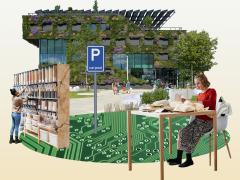Monitoring circularity strategies
This report provides an overview of how PBL implements the monitoring of circularity strategies. It delves into both the conceptual principles and backgrounds of the so-called circularity ladder (‘R-ladder’) as well as its empirical application, by providing practical examples and by substantiating which choices are being made.
Circularity strategies are relevant to gain insight into developments
The circularity strategies play an important role in ongoing research into the circular economy, both by PBL itself and by those research institutes PBL collaborates with. A classification of circularity strategies can help structure the way in which businesses, governments, citizens, or other parties are behaving in a circular fashion. By monitoring the activities surrounding circularity strategies, we gain better insight into the direction of the circular economy transition, which activities do play a role, and which do not.
Customisation and further development are needed
This report aids in the consistent application of circularity strategies as analytical framework. There will, however, always be borderline cases that require specific choices depending on the subject in question. This is evident from our own experiences applying circularity strategies to subjects such as businesses, action plans, academic publications, and grant money. Additionally, there are important topics to further elaborate on, such as a further implementation of the refuse strategy and the distinction between low-value and high-quality recycling.
Authors
Specifications
- Publication title
- Monitoring circularity strategies
- Publication subtitle
- Principles for application by PBL
- Publication date
- 13 March 2025
- Publication type
- Report
- Page count
- 28
- Publication language
- English
- Product number
- 5586




